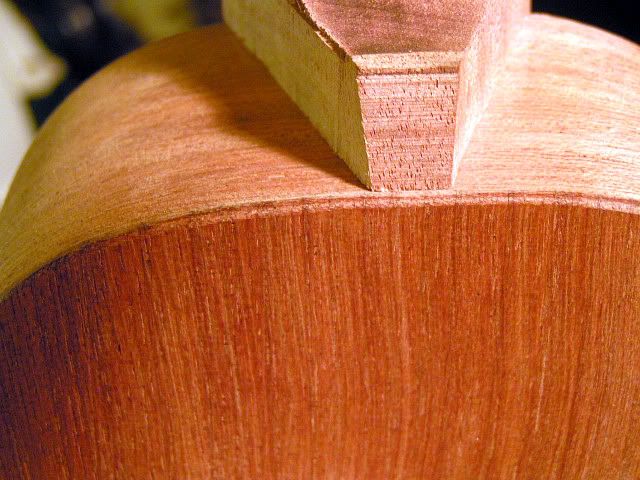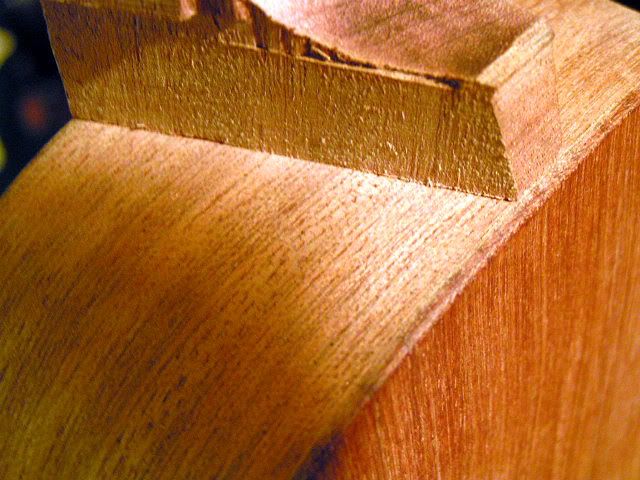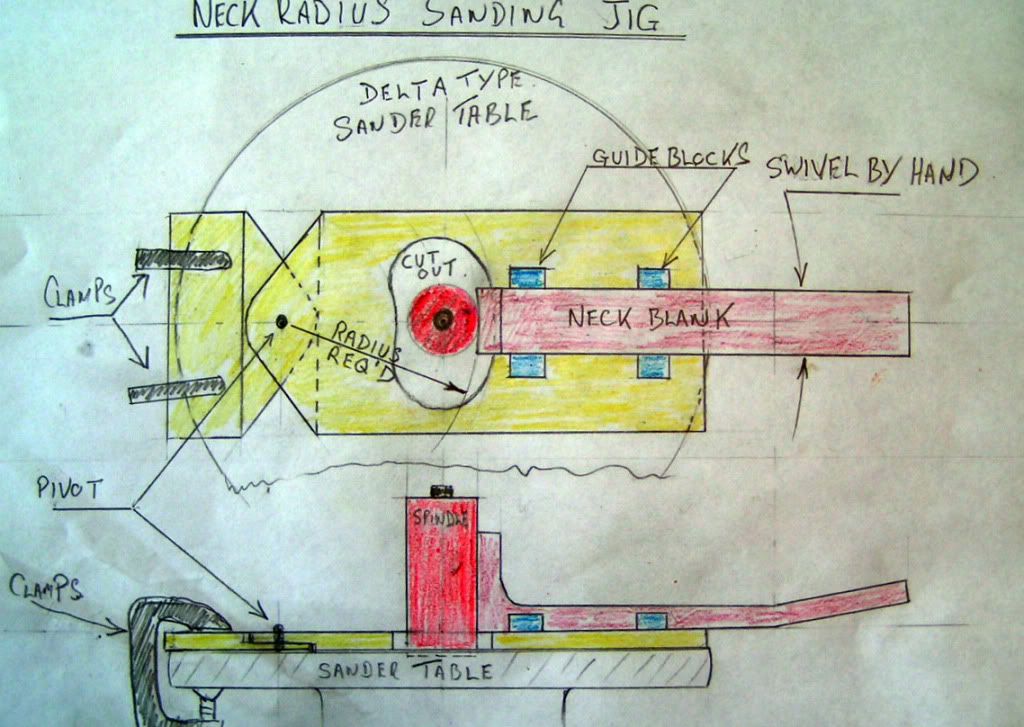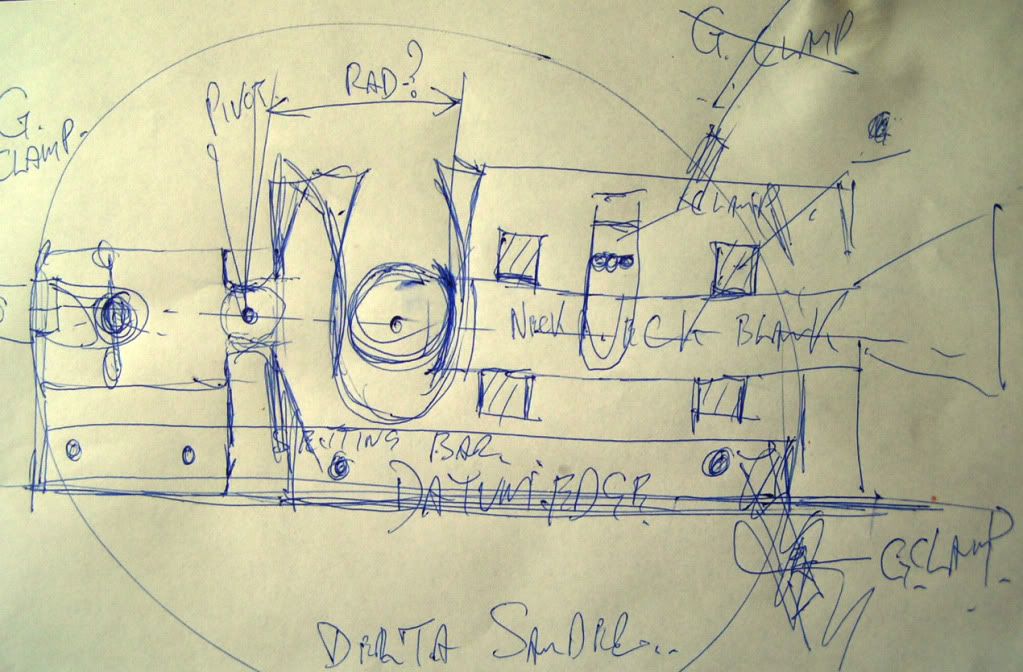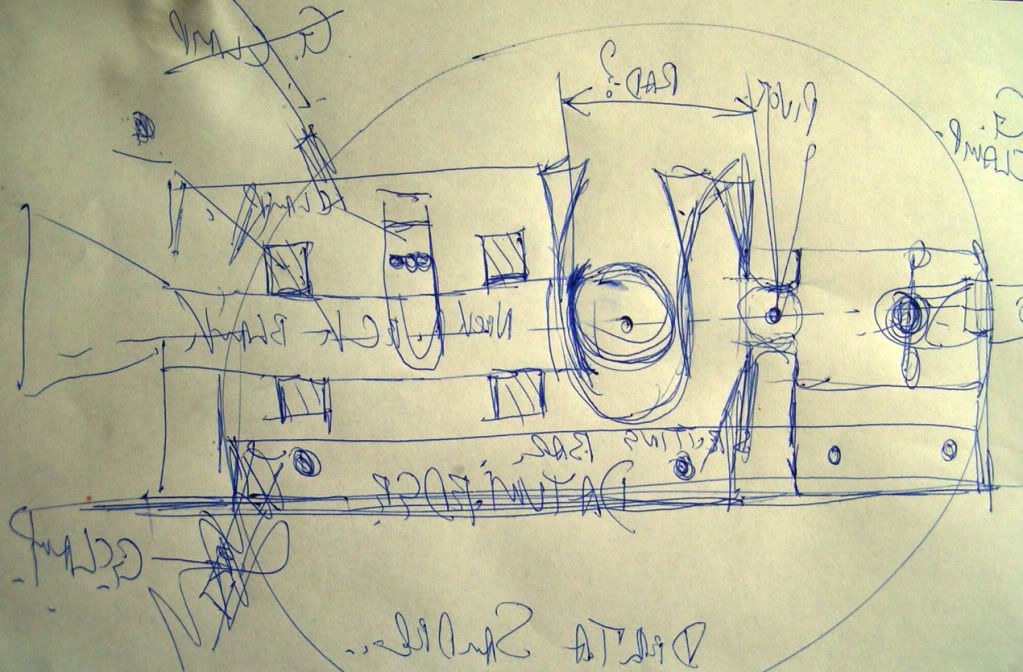I've been struggling to match my uke necks to my uke bodies--I'm on my second one, and it's mating even more poorly than my first one did. I haven't attached it permanently yet, but I bet I'm three hours into patiently sanding it, and I'm all out of patience. I've been simply taping sandpaper to the uke body and then carefully/meticulously scooting the neck back and forth on it, along the line of the joined sides (back and forth as opposed to side to side). I can get it looking good, but not perfect. I'm hoping some of you can share your more successful methods of creating a seamless join here.
In the meanwhile, I'm designing a new uke form with 2.5 inches of FLAT across the neck join area.
In the meanwhile, I'm designing a new uke form with 2.5 inches of FLAT across the neck join area.




